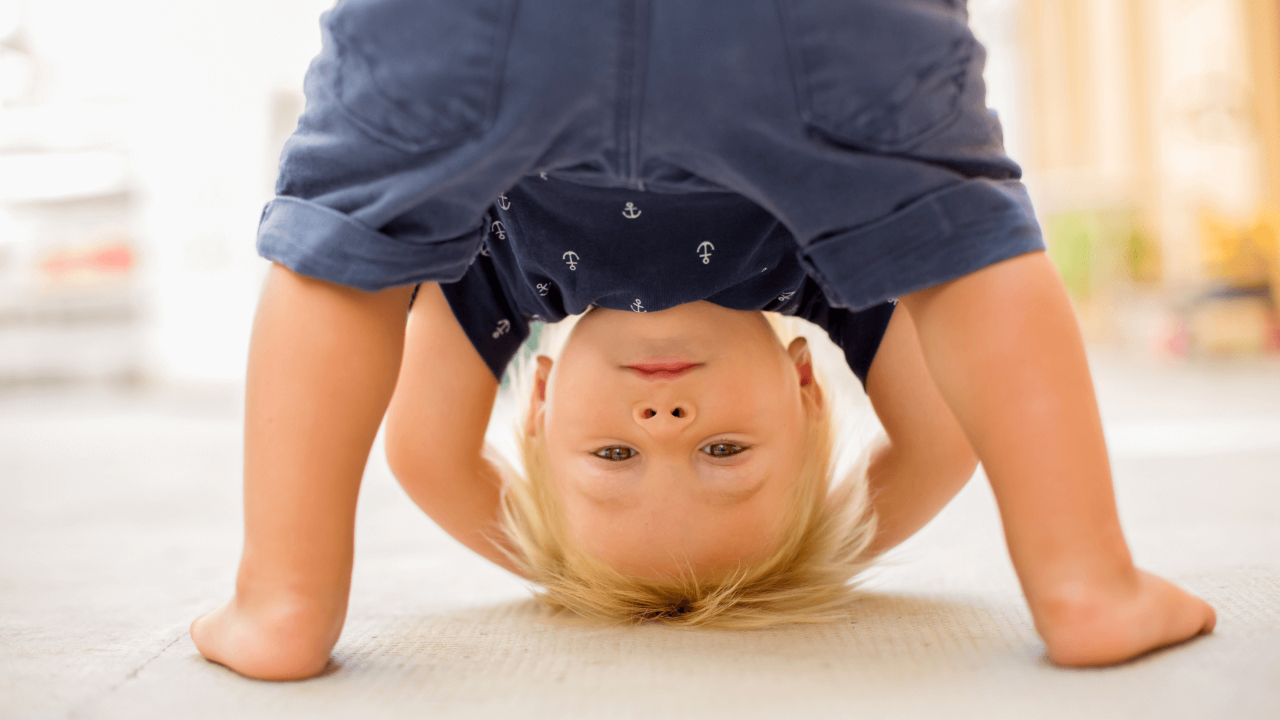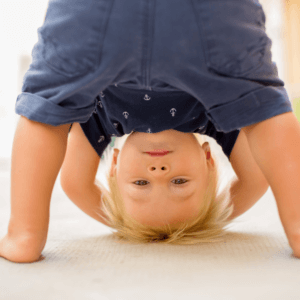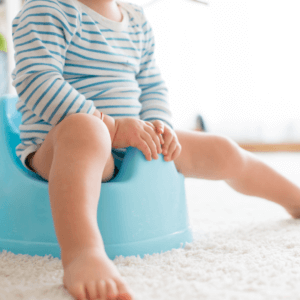Our 3 Secret Senses

Like most people, you probably grew up learning that we have 5 senses – taste, touch, smell, sight, and hearing. Well, I’m here to break the news that we actually have 3 more! Yes, I know- mind blowing! These 3 senses (vestibular, proprioception, and interoception) help us stay balanced, maintain personal space, and know when to go to the bathroom. All pretty important, so I have no idea why we’re not taught about them in grade school like the other 5! I like to call them our 3 Secret Senses. It has a nice catchy ring to it.
Secret Sense #1: Vestibular

The vestibular sense is triggered by tiny (but super powerful) hairs in our inner ear that respond to motion as our bodies move against gravity in different ways. The movement of the hairs sends messages to the brain, which then send messages back to our muscles to help us stay balanced and know whether we are lying down sideways, hanging upside down, or standing upright.
As the first sense to develop in utero, it works alongside our other senses to facilitate so much of our children’s activities throughout the day. Sitting upright in a chair, staying balanced while making an emergency bathroom trip on a turbulent airplane, participating in a gymnastics birthday party, and playing limbo are just a few examples of the vestibular sense’s responsibilities.
The vestibular sense develops over time through more and more exposure to movement. To mimic the vibration and motion felt in the womb, baby wearing and laying baby on your chest to feel the rise and fall as you breathe both trigger the vestibular sense in our younger babies. Riding in a shopping cart, bouncing on your lap, and swinging on a playground swing are wonderful vestibular experiences for our sitting babies.
And while it’s very normal for our toddlers to trip and lose their balance due to their immature vestibular sense, it’s just incredible that they are naturally drawn to so movement that will develop the vestibular system! Does this make you feel better as you run and chase your toddler everywhere? Yeah, I didn’t think so.
Hanging upside down off the side of the couch, rolling across the floor, spinning in circles, jumping on a trampoline, swinging, and riding on scooters are all super effective opportunities to develop and feed the vestibular sense.
Secret Sense #2: Proprioception

This sense helps us know where our bodies are in space. How do you know where your hands are in relation to your shoulders? That you’re wiggling your toes inside our shoes if you can’t see them? Or how about walking in a line at school without bumping into the person in front of you? You guessed it! The proprioceptive sense is your body awareness hero.
Each of our joints contain proprioceptors that are activated when there’s pressure or pull at the joint. The proprioceptors then send signals to the brain about where that body part is. Weight bearing activities such as yoga poses like plank, downward dog, and cobra or wheelbarrow walking, jumping jacks, crawling on hands and knees, swinging on a trapeze, climbing trees, carrying a heavy backpack, or pulling a loaded wagon are all examples of proprioceptive input.
Many children struggle with this sense early on - they trip and fall for no apparent reason, touch friends more than deemed appropriate, can’t sit still, glide their hands along the wall as they walk through a hallway, have poor coordination, and frequently seek opportunities to “crash” or “fall” into things. Although this sense may not develop as quickly as others, the more weight bearing and traction activities we can provide, the better.
Secret Sense #3: Interoception

This is the sense that connects us to the internal workings of our organs. The interoception sense tells us when we need to use the bathroom, if we’re hungry, if our heart is beating fast, if we’re feeling feverish or what type of stomach ache we might have.
This sense can take quite a few years to mature. The average age for potty training happens around two and a half, and our children don’t usually process and feel temperature changes the way we do. If children are not feeling well, they usually act differently without being able to explain what’s bothering them (even if they have the language skills to do so). “My tummy hurts” can mean many different things. Young children usually have difficulty differentiating between motion sickness, acid reflux, a stomach virus, constipation, or even hunger.
Kids who struggle with this sense may have difficulty processing emotions leading to more frequent temper tantrums. Have you heard of the term hangry? While we can experience this as adults, we’re usually more self aware to grab a bite to eat to get ourselves in check. We also never have accidents because we’re too busy playing, we know to stop what we are doing and use the restroom. If our stomach hurts, we are usually able to pinpoint what the issue may be.
While most children will develop this sense over time naturally, some kids need a bit of extra help, here are some things you can try with your child to help them along.
- Try activities similar to those targeting proprioception such as, crawling, pulling a wagon, pushing a full diaper box, etc.
- Get moving – aerobic activities to get the blood pumping and heart racing can help your child understand how their body works.
- Practice breathing exercises – sometimes mindfulness practice is exactly what your child needs to learn how to identify these complicated feelings.
- Implement a schedule. Set times for meals, bathroom breaks, and exercise to help train the body and mind to become more regulated, leading to a calmer state throughout the day
Bottom Line:
We don’t just have the 5 senses you’ve always been taught, we actually have 8! The vestibular, proprioception, and interoception senses allow us to balance, know where our bodies are in space, and understand what’s going on inside our bodies. Lots of movement experiences will develop these senses as your child grows and matures.
Ready for more? I've got tons to share with you in my membership, check it out here.





